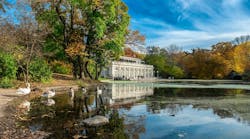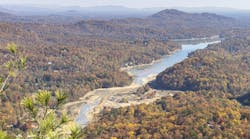
A new study has once again confirmed that trees provide great value in urban settings—and also that we don’t value them enough.
Researchers from the US Forest Service and the University of California at Davis have calculated that the annual cost to keep a city tree alive is $19. For every dollar spent, they say, we reap $5.82 in benefits—a pretty good return on investment. The benefits include everything from providing shade—and thus reducing the urban heat island effect—to mitigating air pollution, retaining stormwater and reducing peak flows, and increasing real estate prices.
And yet, they say, we’re not taking advantage of those benefits. Over roughly the last 25 years, the density of urban trees has declined, from 65.6 trees per kilometer along urban streets to 46.6 per kilometer. The total number of trees has increased, but then so have the sizes of our cities; trees are dying or being removed faster than we’re replacing them. In some newer developed areas we’re not bothering to plant them at all.
As this article explains, the situation might be a bit better in other parts of the US, but not by much. A 2012 study by the Forest Service found a similar decline in urban trees in 20 US cities. However, Richard Hauer, a professor of urban forestry at the University of Wisconsin, believes most cities are planting more trees than they remove. He notes a different problem, though: in some areas parasites are killing off millions of trees; he points to the emerald ash borer in the Midwest as an example.
Many cities, when they do plant trees, plant a lot of the same species, and these monocultures are more vulnerable to insects and disease.
Some cities, like Phoenix, are drawing the public’s attention to trees’ value by putting tags on them to show, for example, how much carbon the tree removes from the atmosphere or how much water the tree canopy holds.
What’s the tree situation in your city—would you say you’re gaining or losing overall? Is there an effort to plant more of them? (Or, as in some areas where leafy debris and root-cracked sidewalks are a problem, an effort to get rid of them?)
About the Author
Janice Kaspersen
Janice Kaspersen is the former editor of Erosion Control and Stormwater magazines.

